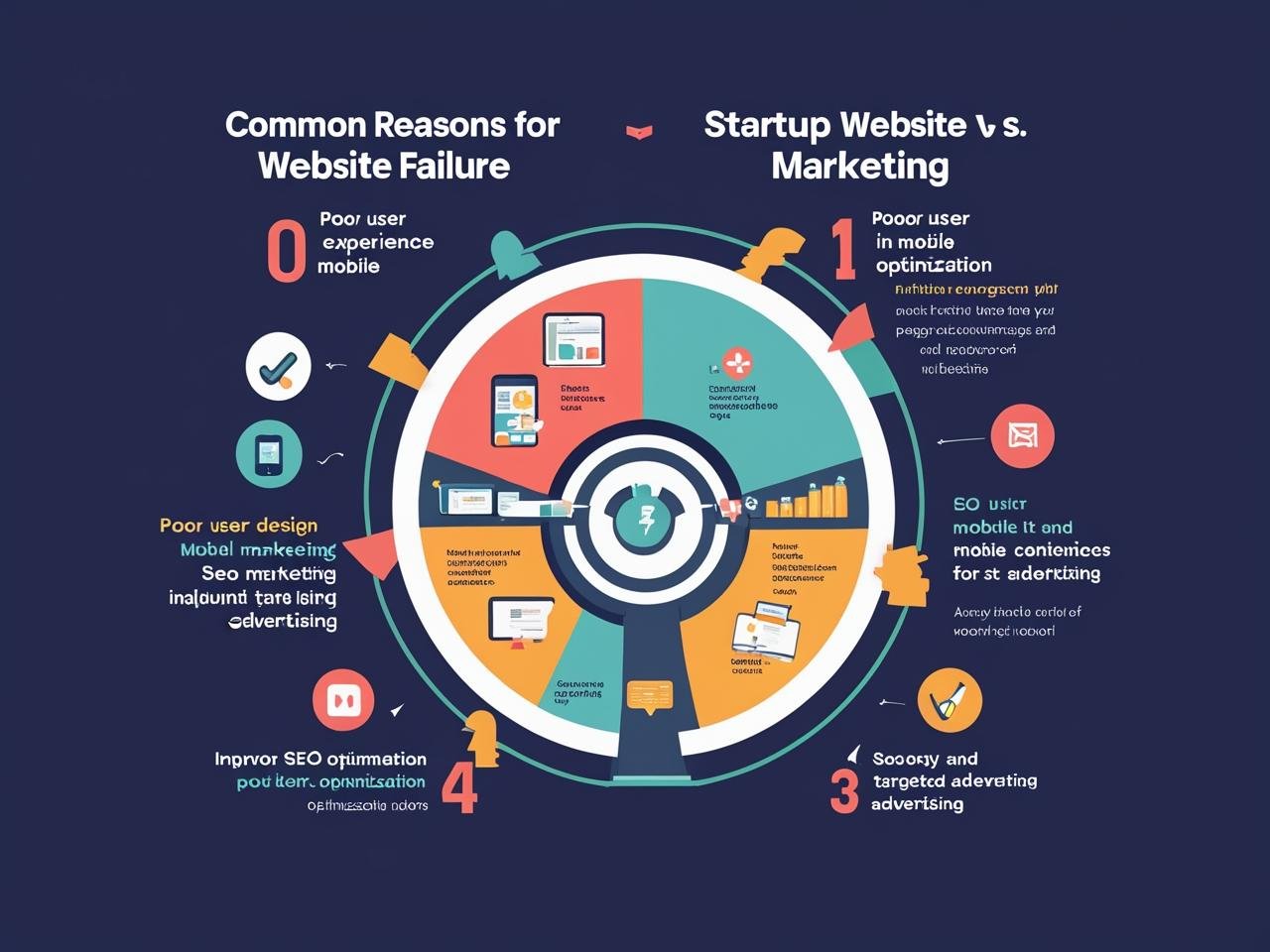Physical Address
1/1-3B, Siva Nagar, 100 Feet Road, Kovai Pudur, Coimbatore, Tamilnadu - 641042, India
Physical Address
1/1-3B, Siva Nagar, 100 Feet Road, Kovai Pudur, Coimbatore, Tamilnadu - 641042, India

Avoid these 6 critical mistakes and turn your website into your best-performing asset.
In 2025, your startup’s website is more than just a digital business card — it’s your pitch deck, brand identity, lead generator, and sales funnel rolled into one.
Yet, the majority of startup websites fail to make an impact.
Why? Because they prioritize design over function, buzzwords over clarity, and trends over trust.
In this post, we’ll break down the most common reasons startup websites fall flat — and exactly how to fix them.
—
❌ Mistake #1: Confusing or Vague Messaging
Within 5 seconds of landing on your homepage, visitors should know:
Most startup websites use jargon like “We empower innovation through scalable synergy” — which means nothing.
✅ Fix:
—
❌ Mistake #2: No Clear CTA (Call to Action)
Many websites forget to tell the visitor what to do next. Do you want them to sign up? Book a demo? Subscribe?
Without a CTA, users bounce.
✅ Fix:
—
❌ Mistake #3: Too Much Focus on Features, Not Benefits
Nobody cares that your app uses AI, GraphQL, or blockchain unless they understand how it helps them.
Features tell, but benefits sell.
✅ Fix:
—
❌ Mistake #4: Poor Mobile Experience
More than 60% of startup website traffic in 2025 is mobile — yet many sites are slow, clunky, or broken on small screens.
✅ Fix:
🛠 Tools: Google Lighthouse, BrowserStack, Responsively App
—
❌ Mistake #5: No Social Proof or Trust Signals
New visitors need reassurance that you’re credible. Without it, they’ll leave.
✅ Fix:
—
❌ Mistake #6: SEO and Performance Neglected
A pretty site that no one finds is useless. Many startup websites lack basic SEO and optimization.
✅ Fix:
🛠 Tools: Ahrefs Webmaster Tools (free), PageSpeed Insights, Yoast SEO (WordPress)
—
💡 Bonus Tips for Startup Sites That Convert
—
🎯 TL;DR: What a Great Startup Website Includes
✅ Clear, simple headline
✅ Strong CTA (above the fold)
✅ Value-driven copy (not just features)
✅ Mobile-first responsive design
✅ Trust-building elements
✅ Fast, optimized performance
✅ Blog or content strategy
✅ Clear next steps for conversion
—
📌 Examples of Startup Sites That Get It Right
—
🚀 Final Thoughts
Your website is often your startup’s first impression — and sometimes, its only chance to convert a visitor into a customer.
Avoid the common traps: unclear copy, missing CTAs, no trust signals. Focus on clarity, value, speed, and simplicity. Treat your website like a product — test, iterate, and optimize regularly.
Want a free teardown or audit of your site? Reach out at blog.texcio.com — we’d be happy to help.
—
Coming soon on blog.texcio.com:
“How to Write Website Copy That Converts (Even if You’re Not a Copywriter)”
“Best Startup Website Templates for 2025”
“Landing Page vs. Full Website: What You Really Need First”